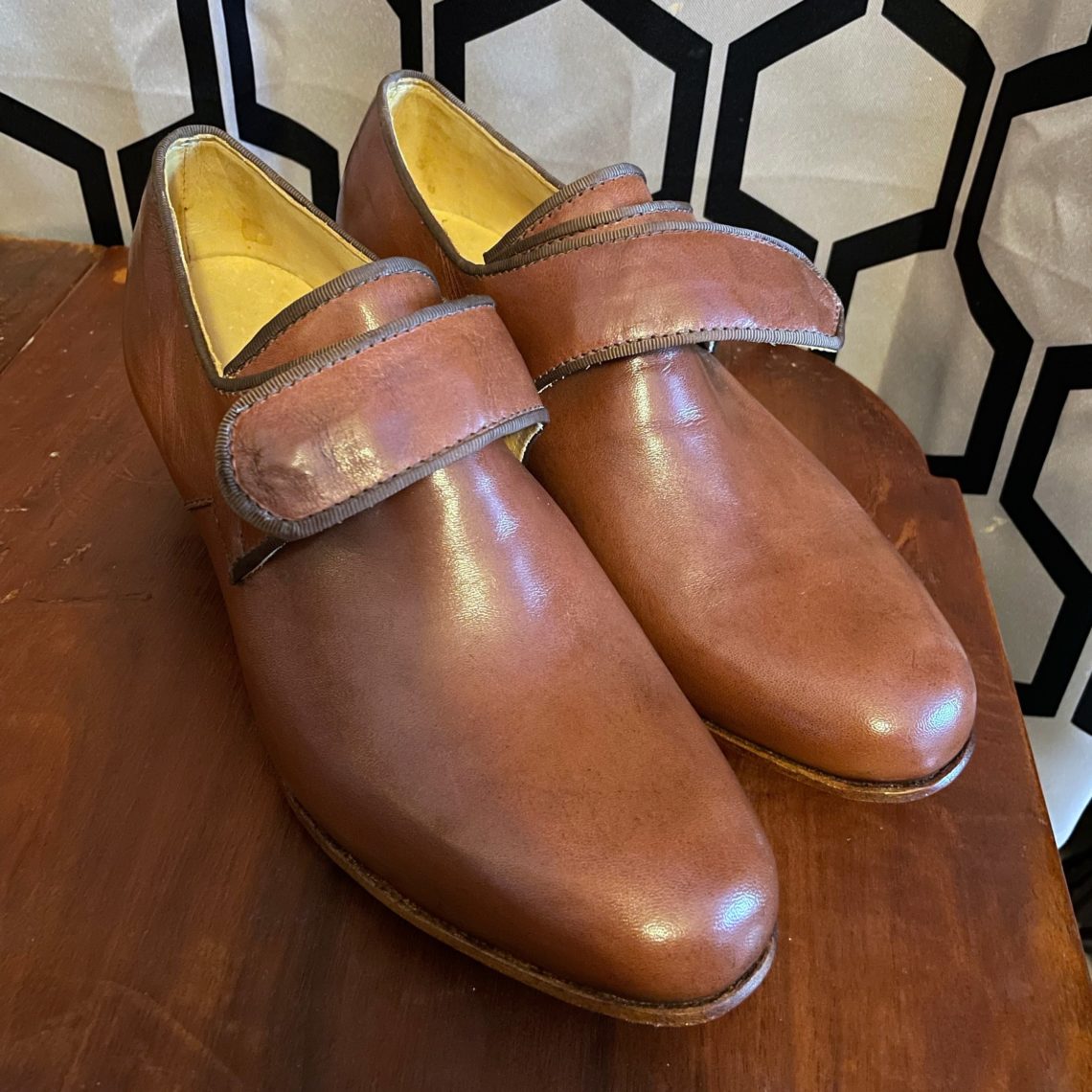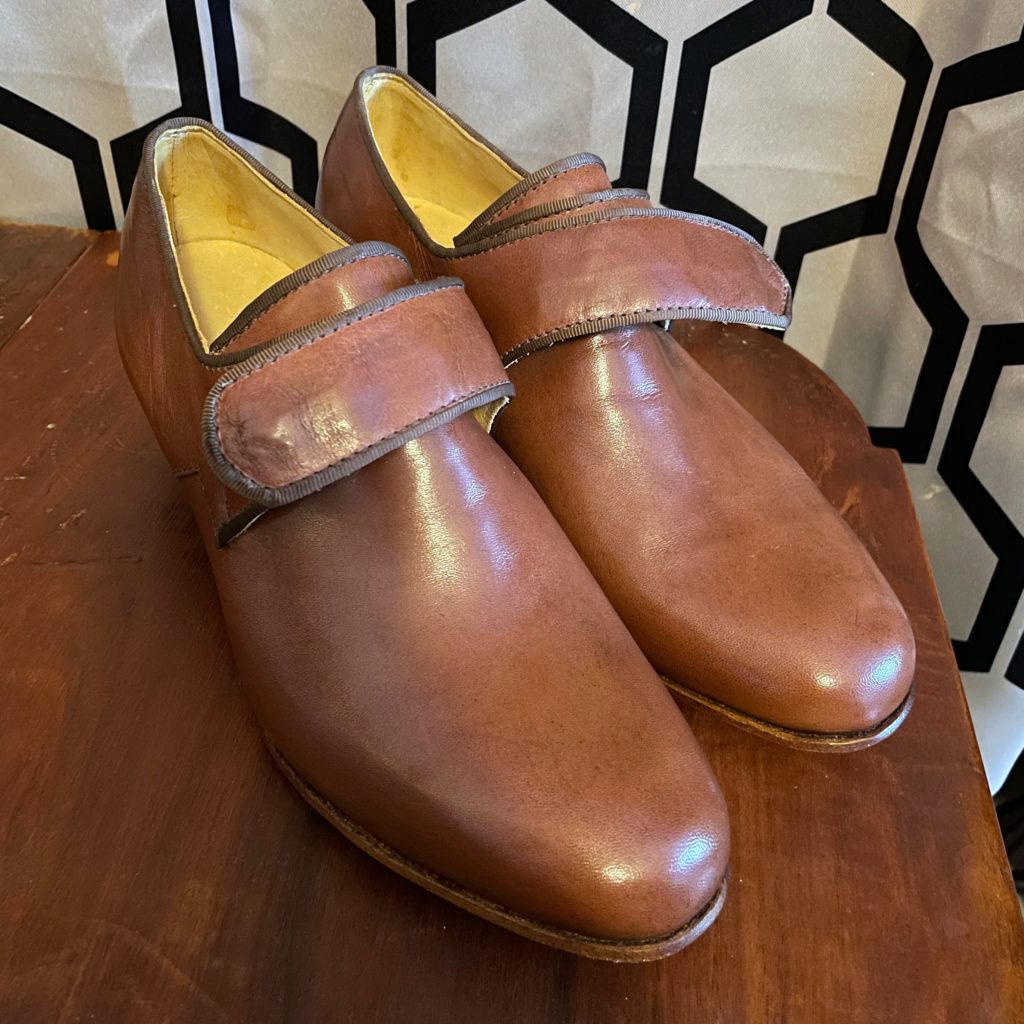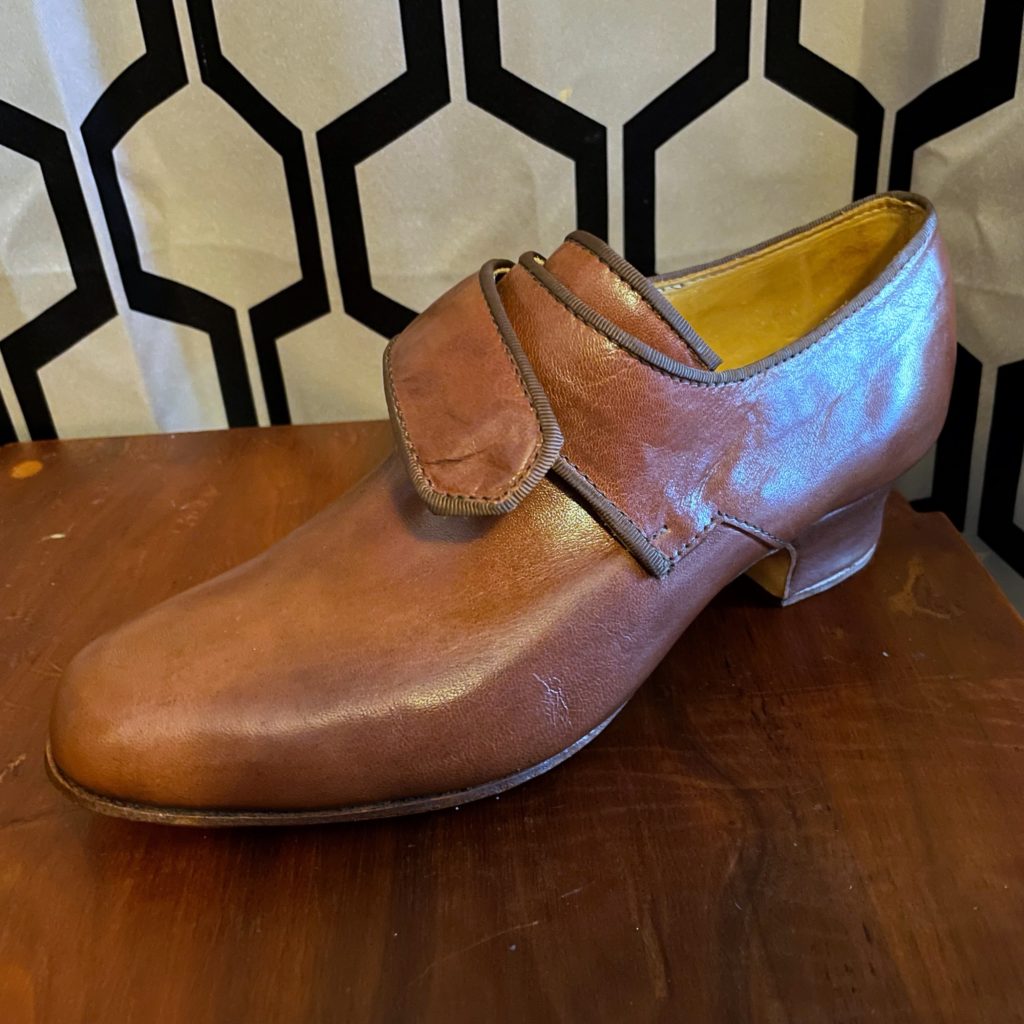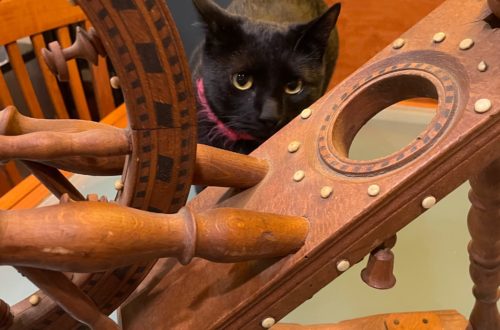
A New Pair of Shoes
Even though I’ve only been to two events during 2021 (and admittedly, things aren’t looking great for the events on my calendar for the rest of the year), one of my big projects for the year has been to add to and improve the clothing and other items that I use at events.
In the decade that I’ve been doing 18th century living history, one of my biggest struggles has been finding comfortable footwear that is accurate, durable, and (reasonably) affordable. My first pair of shoes was a pair of black Connies from Fugawee. These straight last shoes are fairly accurate at a reasonable price point (I think I paid around $100 for them about a decade ago), but they never fit my feet well. Depending on the shoe brand, I wear a women’s size 9 to 10. At the time, the largest size they had available was a 9, and the combination of the straight last and my wide foot always made them tight in the toes. My feet would ache if I stood too much in them, especially when the weather was cold or damp. So I quickly looked around for other options.
My second attempt was a pair of red Kensingtons from American Duchess. At the time I purchased them, I was at the top end of their size range, and with my wide feet, they recommended going up a size. I tried the 9, but as soon as I had them and tried them on, I knew they were too small (just like the Fugawees). If I remember correctly, half sizes weren’t available at the time (around 2014), so I had to go with a 10 when I exchanged them. That gave me the width I needed, but they always felt a little bit long and loose. I probably needed to reset the buckles, but didn’t realize that at the time. They were fine in the sandy soils at Brunswick Town/Fort Anderson State Historic Site, but I had a heel cap swallowed up by the red clay the first time I did a cooking workshop at Fort Dobbs. I didn’t realize it was missing, so cracked the plastic in the heel that held the heel cap in place. I had a replacement, but became concerned about losing it again. And lose it again I did while I was at Middleton Place in 2019 (another site with sandy soils). I’ve glued the heel caps in at this point, but I still worry about losing them. Because of the heel cap issue and the price, I fell back on my Connies whenever it was going to be muddy, messy, or I had a good chance of soaking my feet while doing something.
Starting in 2019, I noticed that heeled “history shoes” would really hurt my feet sometimes. In fact, almost any shoe with a heel sometimes hurt. And by hurt, I mean “felt like I’d broken my foot”. Something was causing pain in the joints in my feet. After a cooler, wet event in 2019 that left me hobbling around during the event (I wore my Connies any time I was worried about the soil eating a heel cap) and aching for days after, I took the advice of a friend and ordered a pair of mules from Samson Historical for those days when I was going to be on my feet a lot. I paid about $100 for them and got the oxblood red leather dye to dye them myself. They worked great with both thin and thick stockings, but my feet still hurt if I was standing for hours at a time. Which is a problem, since I prefer standing during events and in day to day life. And open backs meant that I could slide out of them if I’m not careful, and dirt and wet could easily get into them.
After a few events in the mules, I realized that I’d hit the spot where I really needed to consider custom shoes. Though the average prices were higher than any I’d bought so far, it was apparent that I’d spend even more money in the long run finding shoes that worked okay enough, then became a problem. I still like the American Duchess shoes (I have many other pairs from them for 19th century living history and “just because”), but I was always worried about destroying them cooking or doing other laboring tasks. I started asking around among the people I know in the living history world. And after seeing a pair a friend had made earlier this year, I decided to reach out to Margaret Hubley (https://hubleyleatherworks.com/index.html) about making a pair for me.
Not knowing what to expect, I reached out with a bunch of questions. After a number of emails back and forth, Margaret sent me very detailed instructions on how to trace and measure my feet to allow her to shape the lasts appropriately, and gave me so many options on leather colors. I ultimately went with a rich brown kid leather – I didn’t want yet another pair of red shoes, and I didn’t want to settle for black. She also helped me figure out other aspects of the shoes appearance – tongue shape and type of heel. I went with a square tongue and covered heel, that, when combined with the plain brass buckles I purchased from Burnley and Trowbridge, makes for a very attractive shoe that’s not too fancy and gives me a bit of wiggle room in terms of time period.

When I received them, I was immediately impressed. They’re beautifully made, and they fit my feet so very well – even without the buckles, my feet aren’t sloshing around but also don’t feel pinched. I need to wear them around the house a bit before I set the buckles, but I can already tell that they will be comfortable for the long hours that are part of events. They’ll look great with my working class clothing when I’m cooking and spinning, but will also work when I start building kit that is more appropriate to the middling sort.

Since Margaret can make shoes with fabric uppers as well, I may see about a pair with wool uppers at a later date.

